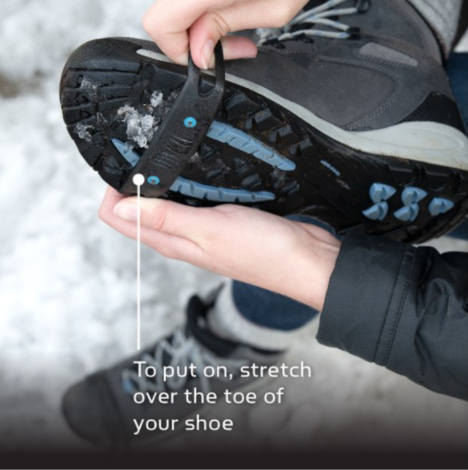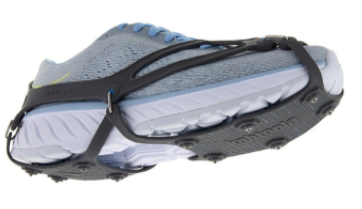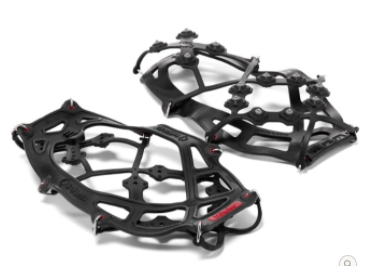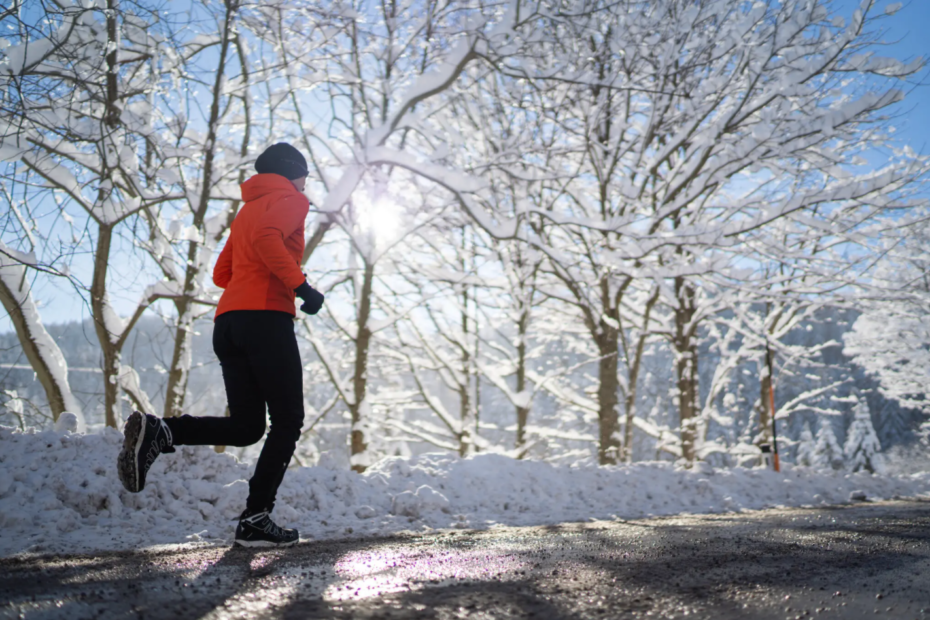If you’ve ever wanted to run outside year-round, now’s your chance to experience all of the fresh powder, bluebird days, and crisp air that New England has to offer. But with that crunch of fresh snow comes an onslaught of ice, wet chills, and cold feet! Let’s discuss layering, traction, and lighting to keep you running upright on the snowy and icy streets, sidewalks, and trails. Overcome these obstacles and get the most out of your runs with some of our favorite gear.
Tools for the job
Layering: As with any winter activity, layering is the ultimate challenge – not too hot, but not too cold. So how does one effectively layer for running outside? First, you’ll have to experiment a little. There’s no easy solution, as we all run hotter or colder than others, so the only way to find out what works best is to try out different layers for different distances. However, a few standard rules include starting with a base layer, a technical/sweat wicking layer and for those frigid days, a sturdy third layer. Don’t forget a hat, buff or balaclava and warm socks.
Pro tip: When the temperatures are below freezing, we recommend covering any exposed skin to avoid damage or injury from the cold (this includes you, shorts-all-year runners!)
Traction
 YakTrax QuickTrax: For the minimalist, YakTrax QuickTrax is the ultimate set up for your winter running needs.These bands simply stretch over the front of your shoes.However, they only offer two spikes on the front of your shoe, so your heels might be left sliding around – use with caution.
YakTrax QuickTrax: For the minimalist, YakTrax QuickTrax is the ultimate set up for your winter running needs.These bands simply stretch over the front of your shoes.However, they only offer two spikes on the front of your shoe, so your heels might be left sliding around – use with caution.
 Kahtoola NANOSpikes Traction: For the avid trail runner, the light profile of this traction system will give you an edge for gripping the ice and at 8 oz will keep you moving for miles. With 10 tungsten carbide tips, these spikes will last many winters over.
Kahtoola NANOSpikes Traction: For the avid trail runner, the light profile of this traction system will give you an edge for gripping the ice and at 8 oz will keep you moving for miles. With 10 tungsten carbide tips, these spikes will last many winters over.
Kahtoola EXOSpikes Traction : With a more aggressive layout than the NANOSpikes, this traction system will keep you vertical on all your winter runs and its lightweight feel won’t weigh you down.
: With a more aggressive layout than the NANOSpikes, this traction system will keep you vertical on all your winter runs and its lightweight feel won’t weigh you down.
 ⅜ Hex Head Sheetmetal Screws: By far the most affordable way (and a personal DIY favorite) to increase your traction on ice is using short hex-head sheet metal screws. At ⅜ of an inch, these screws are short enough that they won’t pierce through the sole of your shoe, but will grip enough rubber to provide solid traction. If you’ve got last year’s running shoes lying around, use a powered screwdriver to place these bad boys into the solid rubber under your shoes in the desired pattern of your choice. I recommend 6-8 per shoe, mimicking the layout of premade traction systems.
⅜ Hex Head Sheetmetal Screws: By far the most affordable way (and a personal DIY favorite) to increase your traction on ice is using short hex-head sheet metal screws. At ⅜ of an inch, these screws are short enough that they won’t pierce through the sole of your shoe, but will grip enough rubber to provide solid traction. If you’ve got last year’s running shoes lying around, use a powered screwdriver to place these bad boys into the solid rubber under your shoes in the desired pattern of your choice. I recommend 6-8 per shoe, mimicking the layout of premade traction systems.
Nothing! Sometimes the best way to run through the winter, cross train on balance, and make the most of your time outdoors is by going slow and steady with zero traction. While this might be challenging, you’ll be focusing on your foot placement, looking ahead of where you’re going to be next, and focusing entirely on your run. Remember to take it slow and make it fun, but beware the potential for broken bones.
Reflective gear/lights
Winter running means shorter days and less sunlight to keep you visible and safe outdoors. Reflective vests, bands, hats, and headlamps are highly recommended when running in poor visibility conditions. This includes when the sun is down, during snow, sleet, or rain, and when running anywhere near the road or where moving vehicles may be present. It is your responsibility to be a safe and visible runner!
Hydration/food
Hydration is essential at all times of the year, especially in winter’s dry air. You may not feel thirsty, but it will be important to hydrate before and after your runs, as well as throughout longer distances. Choose food that is easy to chew, such as Clif Bloks or foods that won’t freeze. Keep gels near your body to keep them warm and easy to eat.
There is a lot to remember for winter running: layering, traction, lighting, and nutrition, but with the right tools your runs will be successful throughout the season. Now get outside and hit the road or trails!

